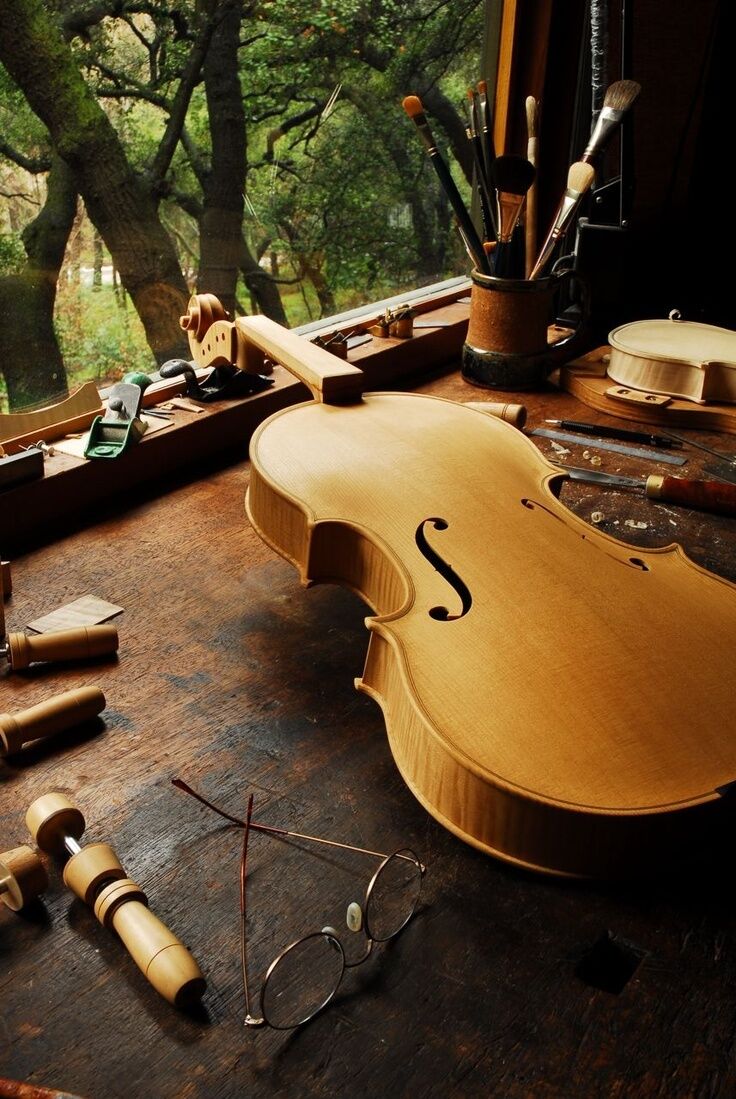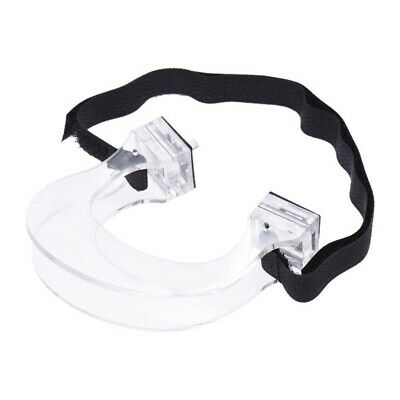-40%
Make, Repair, and Restore Violins and Bows (5 Complete PDF eBooks on a CD)
$ 5.25
- Description
- Size Guide
Description
Make, Repair, and Restore Violins and BowsMake, Repair, and Restore Violins and Bows Retailer!
Description:
Full copy of Make, Repair, and Restore Violins and Bows in PDF eBook format
(
5 Complete PDF eBooks on a CD in a CD Sleeve)
Windows/Mac/iOS/Android/Kindle
Learn how to make, repair, and restore violins and bows with this complete 5 volume PDF eBook set! Includes photos and illustrations!
The Repairing & Restoration of Violins
CHAPTER I.—Introductory
CHAPTER II.—Slight Accidents—Modern Restorers—"Chattering"—The Proper Sort of Glue—Its Preparation and Use
CHAPTER III.—Minor Repairs—Cramps and Joints—Violin Cases—Rattles and Jars—Loose Fingerboards—Atmospheric Temperature—Old-Fashioned Methods of Repairing—Modern Ways—A Loose Nut
CHAPTER IV.—Injuries to the Head or Scroll—Insertion of Fresh Woods—Colouring of White Woods—Separation of Head from Peg-box and Re-joining—Stopping Material for Small Holes or Fractures—The Peg-box Cracked by Pressure
CHAPTER V.—Fracture of Peg-box and Shell—Chips from this Part—Filling up of Same—Restoration to Original Form, after Parts have been Lost—Worn Peg-holes, Re-filling or Boring Same
CHAPTER VI.—Loosening of Junction of Graft with Peg-box, and Refixing Same—Grafting, Different Methods of Performing this—Lengthening the Neck—Old and Modern Method—Renewal of Same—Inclination of Neck and Fingerboard with Regard to the Bridge—Height of Latter, and Reason for It
CHAPTER VII.—Finishing the Fingerboard—Fixing the Nut—Size and Position of Grooves for the Strings—Filing Down the Graft—Smoothing, Colouring, and Varnishing Same
CHAPTER VIII.—Injuries that can be Repaired from the Outside—Insertion of Fresh Woods in Fracture of the Ribs—The Effects of Climate on the Glue in Violins
CHAPTER IX.—The Glue Used by the Early Italian Makers—Insertion of Pieces of Woods for Repairing Lost Parts—Replacing Lost Rib and Repairing Interior without Opening when Possible—Securing Loose Lower Rib to End Block—Different Methods—Treatment of Worm-holes—Fixing on Graft on Neck
CHAPTER X.—Ways of Removing the Upper Table and the Neck—Cleansing the Interior—Preservation of the Original Label—Closing of Cracks in Upper Table
CHAPTER XI.—Getting Parts Together that apparently do not Fit—The use of Benzine or Turpentine—Treatment of Warped or Twisted Lower Tables
CHAPTER XII.—Removal of Old Superfluous Glue by Damping—Replacing Old End Blocks by New Ones—Temporary Beams and Joists Inside for Keeping Ribs, etc., in Position while Freshly Glued
CHAPTER XIII.—Re-opening the Back to Correct the Badly Repaired Joint—A Few Words on Studs—Filling Up Spaces left by Lost Splinters—Matching Woods for Large Cracks, etc.
CHAPTER XIV.—Repairing Lost Portions—Margins of Sound Holes—Matching the Grain—Fixing and Finishing Off—Replacing with Fresh Woods Large Portions of Upper Table—Lost Parts of Purfling—Restoring It with Old Stuff
CHAPTER XV.—Repairs to Purfling (continued)—Filling up an Opening Extending to the Whole Length of the Violin—Fitting the Core—Fixing it in Position and Retaining it There—Finishing the Surface
CHAPTER XVI.—Repairing Undertaken by People in Business not connected with that of Bowed Instruments—Removal of a Fixed Sound Post—Fitting a Fresh Part of Worm-Eaten Rib—Bringing Together the Loosened Joint of the Back Without Opening the Violin
CHAPTER XVII.—Insertion of Studs along the Joint Inside without Opening the Violin—Lining or Veneering a Thin Back
CHAPTER XVIII.—The Bar in Olden Times—The Modern One—The Operation of Fitting and Fixing the Bar—Closing and Completion of the Repairs—Varnishing of the Repaired Parts having Fresh Woods
Violin Making
INTRODUCTION
CHAPTER I.—SELECTION OF WOODs
CHAPTER II.—THE BACK
CHAPTER III.—PURFLING
CHAPTER IV.—BENDING THE PURFLING
CHAPTER V.—MODELLING THE BACK
CHAPTER VI.—WORKING OUT THE BACK
CHAPTER VII.—THE BELLY
CHAPTER VIII.—THICKNESSES OF THE BELLY
CHAPTER IX.—THE SOUNDHOLES
CHAPTER X.—THE BASS BAR
CHAPTER XI.—THE RIBS
CHAPTER XII.—FIXING RIBS, ETC.
CHAPTER XIII.—FIXING THE BELLY
CHAPTER XIV.—THE SCROLL
CHAPTER XV.—FIXING NECK, FINGERBOARD, ETC.
CHAPTER XVI.—OF VARNISH AND VARNISHING
CHAPTER XVII.—FITTING UP FOR USE
CHAPTER XVIII.—CONCLUSION
The Violin - Its Famous Makers and Their Imitators
Section I.—The Early History Of The Violin.
Section II.—The Construction Of The Violin.
Section III.—Italian And Other Strings.
Section IV.—The Italian School.
Section V.—The Italian Varnish.
Section VI.—Italian Makers.
Section VII.—The French School.
Section VIII.—French Makers.
Section IX.—The German School.
Section X.—German Makers.
Section XI.—The English School.
Section XII.—English Makers.
Section XIII.—The Violin And Its Votaries.
Section XIV.—Sketch Of The Progress Of The Violin.
Section XV.—Anecdotes And Miscellanea Connected With The Violin.
The Bow, Its History, Manufacture and Use
PART I. - The History of the Bow
CHAPTER I. - Origin Of Instruments. Frictional Vibration. The Bow Distinct From The Plectrum. The Trigonon. Bowing With Various Objects.
CHAPTER II. - Oriental Origin Of The Bow. Indian, Chinese And Other Eastern Bowed Instruments.
CHAPTER III. - The Crwth. Fleming’s “Etruscan Ravanastron.” The Mediæval Bow. Unreliability Of Early Drawings And Sculptures.
CHAPTER IV. - The Beginnings Of The Modern Bow. Ornamentation. A Possible Stradivaribow. The Movable Nut. The Crémaillère. The Screw Nut.
CHAPTER V. - Vuillaume’s Facts. The Ferrule And Slide. John Dodd.
CHAPTER VI. - Dr. Sellè’s Recollections Of Dodd. His Work And Poverty. Dodd And Tourte. The Calculation Of Fétis And Vuillaume.
CHAPTER VII. - Lupot. Peccatte. Spurious Stamping. Panormo. W. J. B. Woolhouse’s calculations.
CHAPTER VIII. - A List Of Bow Makers.
PART II. - Bow Making
CHAPTER IX. - Materials. Brazil Woods. Horsehair. The Action Of Rosin.
CHAPTER X. - Qualities Essential In A Bow Maker. Shaping The Stick. Setting The Cambre. The Faces. The Trenches. The Nut.
CHAPTER XI. - Possible Repairs. Splicing. Renewing Cups. Restoring The Nut. Re-Facing.
CHAPTER XII. - Re-Lapping. Re-Hairing. Choice Of Rosin.
CHAPTER XIII. - The Perfection Of The Modern Bow. Dr. Nicholson’s Patent Bow. Vuillaume’s inventions. Self-Hairing Bows. A Folding Bow. The “Ketteridge Bow.”
PART III. - The Art of Bowing
CHAPTER XIV. - The Undecided Aspect Of Technique. Importance Of A Knowledge Of The anatomy Of The Hand. The Function Of The Thumb. Individuality In Technique.
CHAPTER XV. - Bowing Historically Considered. The Oldest English Violin Method. Sympson’s Instructions In Bowing. Those Of Mace (1676). Those Of Variousmodern Masters.
CHAPTER XVI. - The Fingers Of The Right Hand. Differences Of Opinion Thereon. Sautillé. The loose Wrist.
CHAPTER XVII. - The Importance Of The Slow Bow. The Rapid Whole Bow. Staccato. Bowing studies And Solos. Conclusion.
Violin Mastery - Talks with Master Violinists and Teachers
In this book a number of famous artists and instructors discuss esthetic and technical phases of the art of violin playing in detail, their concept of what Violin Mastery means, and how it may be acquired. Only limitation of space has prevented the inclusion of numerous other deserving artists and teachers, yet practically all of the greatest masters of the violin now in this country are represented. That the lessons of their artistry and experience will be of direct benefit and value to every violin student and every lover of violin music.
I. EUGÈNE YSAYE The Tools of Violin Mastery
II. LEOPOLD AUER A Method without Secrets
III. EDDY BROWN Hubay and Auer: Technic: Hints to the Student
IV. MISCHA ELMAN Life and Color in Interpretation. Technical Phases
V. SAMUEL GARDNER Technic and Musicianship
VI. ARTHUR HARTMANN The Problem of Technic
VII. JASCHA HEIFETZ The Danger of Practicing Too Much. Technical Mastery and Temperament
VIII. DAVID HOCHSTEIN The Violin as a Means of Expression
IX. FRITZ KREISLER Personality in Art
X. FRANZ KNEISEL The Perfect String Ensemble
XI. ADOLFO BETTI The Technic of the Modern Quartet
XII. HANS LETZ The Technic of Bowing
XIII. DAVID MANNES The Philosophy of Violin Teaching
XIV. TIVADAR NACHÉZ Joachim and Léonard as Teachers
XV. MAXIMILIAN PILZER The Singing Tone and the Vibrato
XVI. MAUD POWELL Technical Difficulties: Some Hints for the Concert Player
XVII. LEON SAMETINI Harmonics
XVIII. ALEXANDER SASLAVSKY What the Teacher Can and Cannot Do
XIX. TOSCHA SEIDEL How to Study
XX. EDMUND SEVERN The Joachim Bowing and Others
XXI. ALBERT SPALDING The Most Important Factor in the Development of an Artist
XXII. THEODORE SPIERING The Application of Bow Exercises to the Study of Kreutzer
XXIII. JACQUES THIBAUD The Ideal Program
XXIV. GUSTAV SAENGER The Editor as a Factor in "Violin Mastery"
I will send this eBook by postal mail. Sending it by email or by any other digital delivery method is not allowed and violates eBay policy.
System Requirements
:
Windows or Mac computer (all types) - If you download the contents of this CD to your computer then you can also copy the PDF files to any PDF capable device.
CD Computer Drive
Adobe Acrobat Reader - Free download link included.
Benefits
:
Convenient, portable CD.
Use for yourself and others. Also makes for a great gift!
Features
:
Adobe Acrobat Reader allows you to copy PDF text to Microsoft Word, Notepad, etc. You can also hear the text read aloud to you.
Complete 5 volume set with photos and illustrations.









